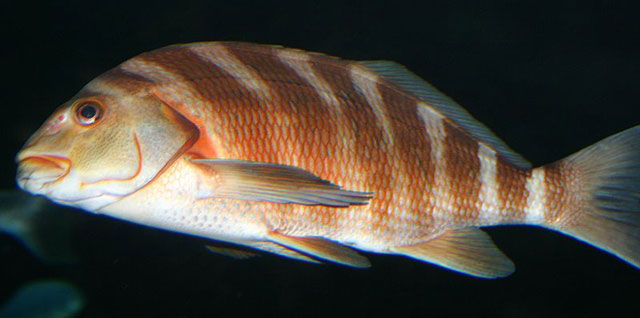
On land, our planet's rising temperatures have shifted ecosystems uphill and towards the poles. According to a study in Nature Climate Change, a similar shift may be happening in the oceans. A fish species native to Australia and New Zealand seems to have hit a wall in the northern part of its range, with individuals in that area experiencing a decline in growth in that area.
The species in question, the banded morwong (also known as the red moki, or C. spectabilis) serves, in a lot of ways, like a tree. Once its juvenile stage is over, it settles down on a reef and pretty much stays there, living for nearly 100 years. It's also got the equivalent of tree rings: a bony organ called the otolith, which sees additional growth every year that's proportional to the growth of the rest of the fish. So, a single banded morwong can provide a history of local growth conditions for nearly a century.
Its habitat, the Tasman Sea, lies between Australia and New Zealand. Sea surface temperatures have warmed rapidly there, in part following the global trend, and in part because of changes in the East Australian Current. Fish can be very sensitive to changes like this. They grow well in a specific range of temperatures, with rising warmth increasing their growth rate. But, above a certain point, the elevated temperatures will raise a fish's metabolism, putting strain on its circulatory system, and diverting resources from growth. Thus, most fish show a curve that looks like an inverted U when growth is plotted against temperature.
The authors show that the banded morwong displays precisely this sort of growth curve. At the southern end of its range, growth has accelerated with rising temperatures. But, in northern New Zealand, where the temperatures have risen the most, the fish have apparently been pushed past their peak growth, and growth rates show a decline as annual temperatures approach and exceed 18°C. This strongly suggests that the growth curves seen in lab experiments reflect real-world limits.
The authors don't necessarily expect the banded morwong to die out in New Zealand right away. Due to its long life span, old fish will be around for a while, and young fish, which grow elsewhere, continue to find their way to these sites. And the species is doing much better at Australian sites. Still, the potential that the entire species may shift its range could help inform conservation practices, and it's definitely worth determining if similar affects apply to commercially significant and/or endangered populations.
Nature Climate Change, 2011. DOI: 10.1038/NCLIMATE1084 (About DOIs).
reader comments
29